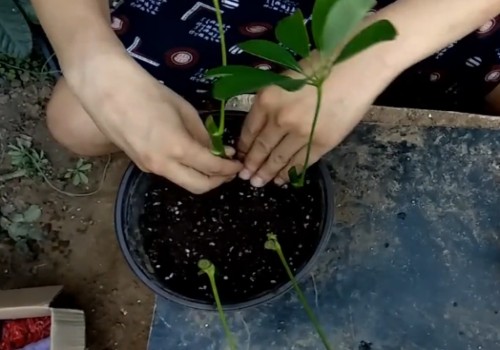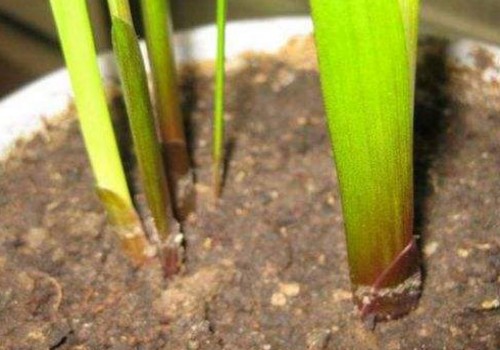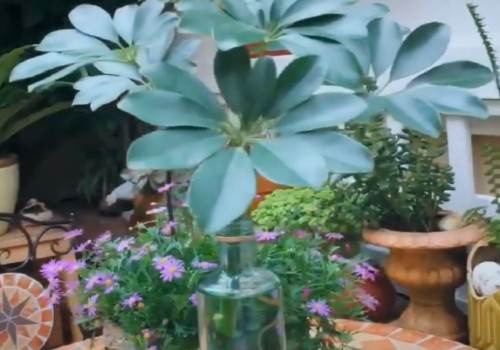The Cuttage method of Camellia oleifera
Duck foot wood is a kind of evergreen plant with high ornamental value, and it can be propagated by cutting. As a family pot cultivation, duck foot wood is very suitable for cutting means to propagate seedlings. However, when some friends get the branches of duck foot wood from their neighbors or through other channels, they do not know how to cut them. Today, the editor will share with you the cutting method of duck foot wood.

In fact, if we want to propagate duck foot wood by cuttage, we do not need to cut off the sturdy branches as cuttings. As potted duck feet usually need regular shaping and pruning, and some robust branches will be cut off naturally, we can use these branches to cut and propagate.
After the branches are cut off, we can't cut them directly. After all, there are a lot of branches and leaves on the branches. In general, we keep 2-3 nodes of the cut main branch, and then cut off the excess part. The remaining 2-3 branches retain 1-2 leaves in the upper part and cut off all the branches and leaves at the lower end. At the same time, the lower end of the branch used for cutting needs to be trimmed into a slant to increase the basic area with the soil, which is more conducive to rooting.
However, it should be noted that the branch without the terminal bud on the branch should not be thrown away, because cutting propagation with it is easier to survive. And after survival, its terminal bud can continue to grow upward and eventually become a larger trunk. The cuttings waiting for the terminal bud can generally be cut directly, and the survival rate is higher and the growth is faster.
Next, we should allocate the soil scientifically and prepare a suitable substrate for cuttings. Original and in order to promote the rooting of cuttings, we put a few drops of rooting solution into the soil after loading the prepared soil into the basin. Of course, we can also mix the rooting solution into an aqueous solution, and then soak the base of the cuttings in it for about half an hour. After soaking, insert the cuttings into the soil.
But if we get that the wound at the bottom of the duck foot branch has become dry, be sure to trim the dried part before cutting. Then soak it in water for about 2 hours to allow the cuttings to fully absorb water. Then put it into the rooting solution and soak it for about half an hour, and finally carry on the cutting planting. After such a treatment, the survival rate of duck foot cuttings will be greatly improved.
So why are we doing all of the above? Because after we cut the branches, we have to go through the process of going home to deal with them, which will waste a lot of time, and the branches will lose some water more or less. Soaking branches can replenish water, which can improve the survival rate. And the effect of soaking rooting solution is also limited, so we should also use the rooting water that has been soaked in cuttings and pour it directly into the basin.
Perlite, vermiculite and peat soil are recommended as cutting media, and mixed well according to the proportion of 1:1:1. The use of such a mixed matrix is not only good permeability, but also rich in nutrients. After the preparatory work is ready, we can carry on the cutting propagation.
When cutting, do not rush to pour water first, directly insert the cuttings into the substrate, because we prepare the substrate itself is relatively soft. And be sure to let the cuttings stand upright in the pot, do not tilt or lodge, and pour the rooting liquid soaked into the flowerpot after the cuttings are finished. And the rooting agent in the soil will continue to work the next time it is watered.
After completing the above operations, we will put the cuttings in a cool and ventilated environment, and be sure to avoid direct sunlight, especially strong light. At the same time, it is recommended to spray water on the cuttings more than once a day to keep moisture. Because the cuttings just cuttings did not take root, they can only absorb a small amount of water through the leaves to ensure that the leaves of duck feet wilt. If it goes well, it can take 1-2 weeks to take root, and the root system will grow well after a month or so.
Time: 2019-06-05 Click:
- Prev

Can the leaves of sweet cherry be cut?
Vanilla blossoms are both delicate and fragrant, as long as successful pollination, but also can bear seeds! Xiangxue orchid can usually bear seeds in May at the end of the flowering period, while mature seeds can be obtained in June. Then we can harvest the seeds and sow them in a greenhouse.
- Next

Hydroponic culture method of duck foot wood
Duck foot wood is deeply loved by the public because of its evergreen branches and leaves and high ornamental value. at the same time, it also has a certain ability to purify the air, and can also play a good role in embellishing and beautifying the home environment. From the point of view of reproduction and cultivation, it can be cultivated in both soil and water, and no matter which way is adopted to breed.
Related
- Fuxing push coffee new agricultural production and marketing class: lack of small-scale processing plants
- Jujube rice field leisure farm deep ploughing Yilan for five years to create a space for organic food and play
- Nongyu Farm-A trial of organic papaya for brave women with advanced technology
- Four points for attention in the prevention and control of diseases and insect pests of edible fungi
- How to add nutrient solution to Edible Fungi
- Is there any good way to control edible fungus mites?
- Open Inoculation Technology of Edible Fungi
- Is there any clever way to use fertilizer for edible fungus in winter?
- What agents are used to kill the pathogens of edible fungi in the mushroom shed?
- Rapid drying of Edible Fungi

